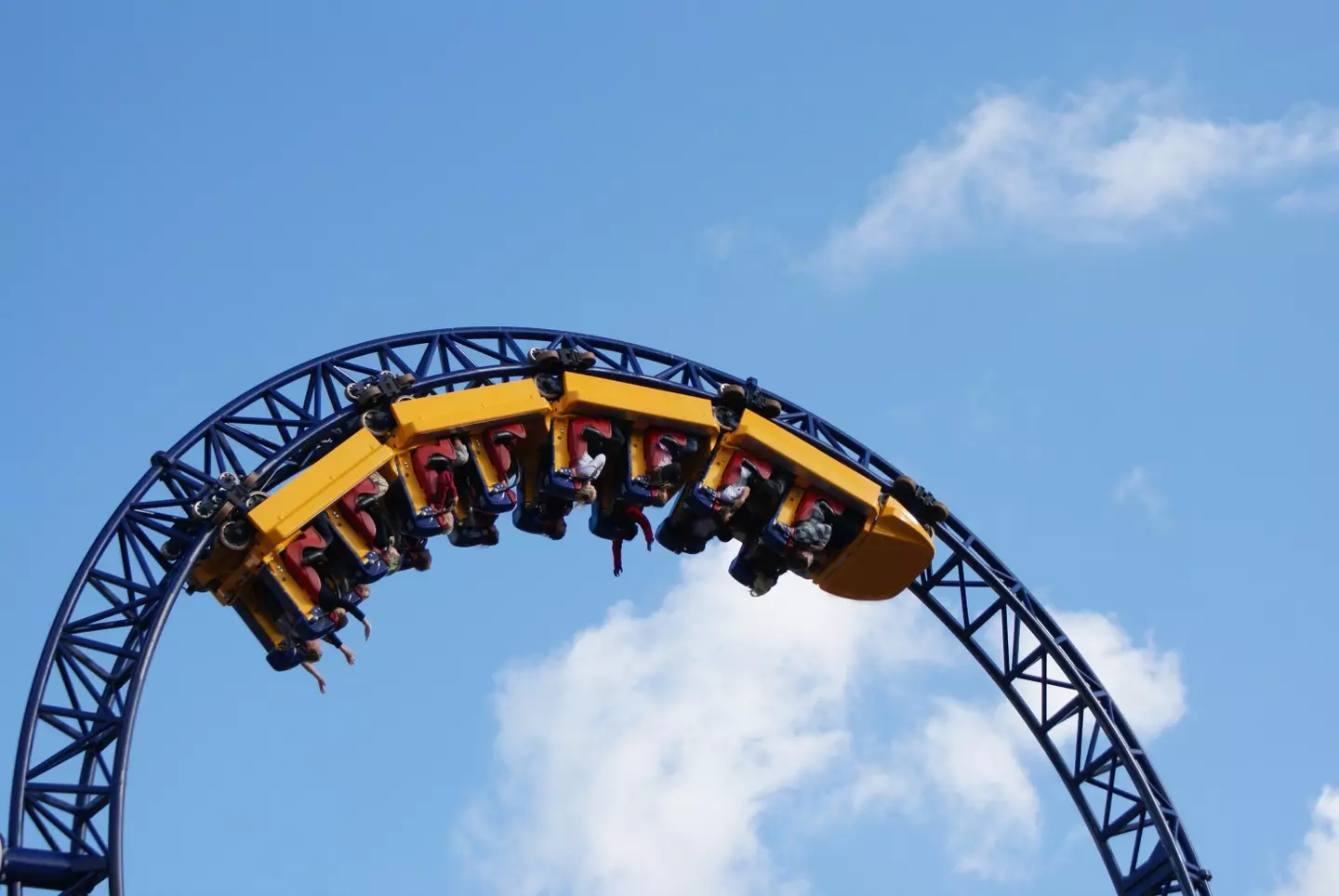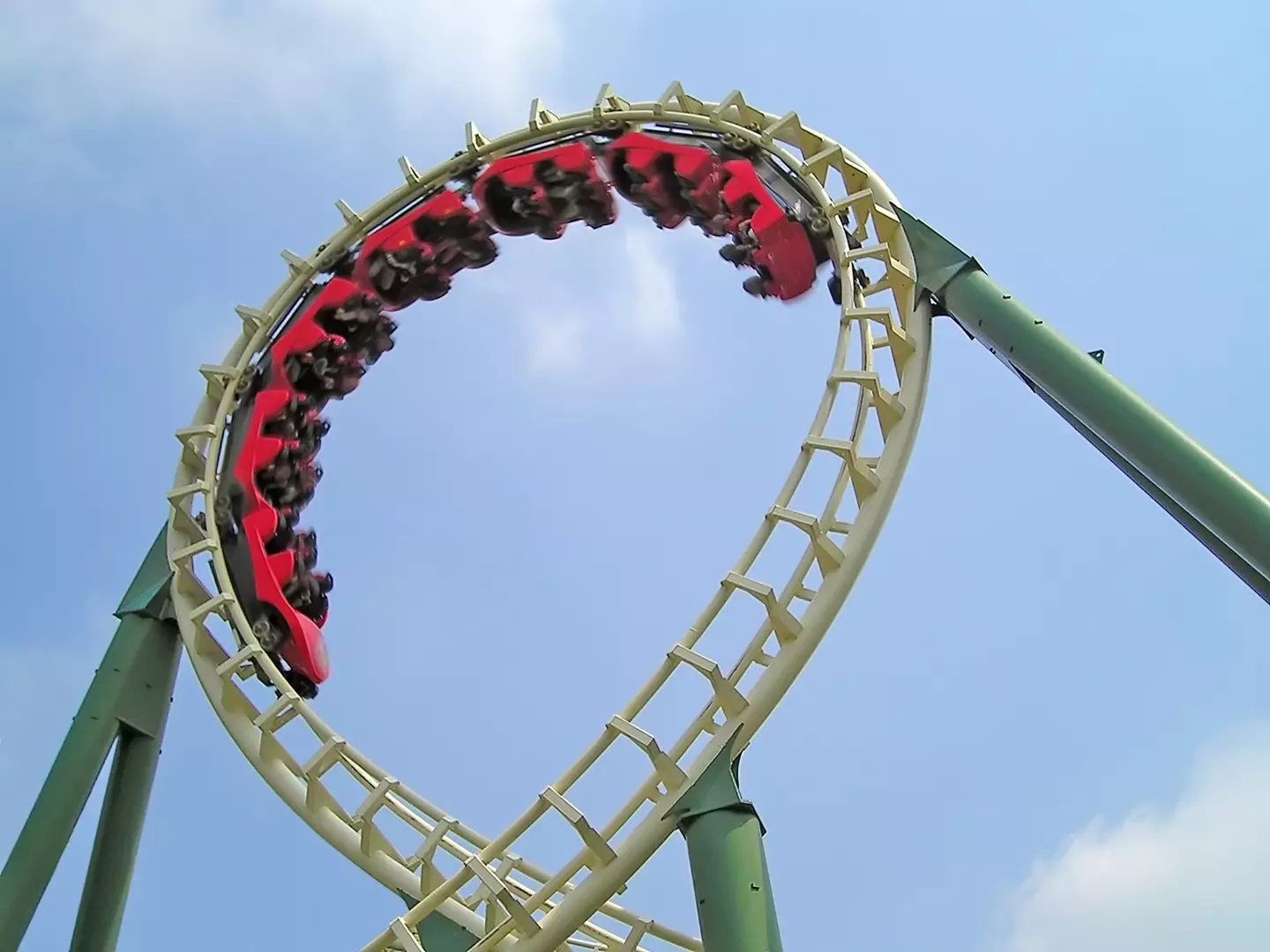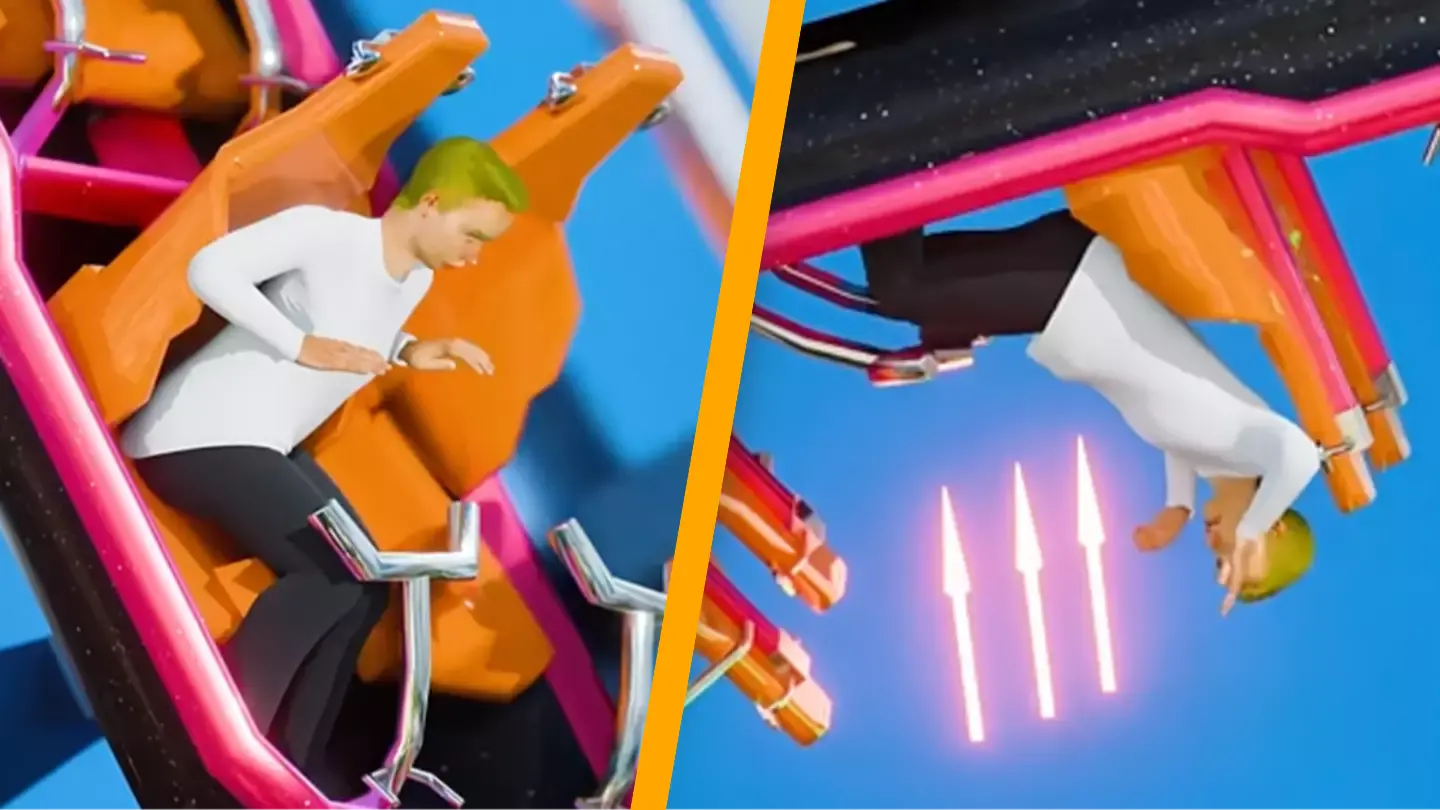A gripping simulation reveals why you likely wouldn’t be thrown from a rollercoaster seat even if the safety bar malfunctioned.
Rollercoasters are a marvel of physics, heavily dependent on gravity to function – prepare for a technical dive.

Rollercoasters operate on two fundamental Newtonian principles: gravity and inertia.
As you ascend the daunting hill, the potential energy increases, causing the coaster to speed up when it descends.
The rest of the ride is cleverly designed to disperse that energy in an exhilarating yet secure manner.
Gravity affects an object with a force of 1G, meaning you would accelerate at 9.8m/s if no other force was acting on you.
Inertia is the principle that an object will remain at rest or in motion unless an external force acts upon it.
To break it down – a car won’t move unless you apply the gas or slow down unless you use the brakes.
These forces combine to make rollercoasters function. Following so far?

A simulation – shared on YouTube by Zack D. Films – illustrates how momentum is released when a coaster accelerates and the peculiar effect it has during a loop.
This phenomenon is linked to gravitational force, or g-force, which keeps you in your seat when the fast-moving ride reaches the loop’s peak.
As the ride ascends, inertia and gravity push you into your seat, but at the loop’s top, these forces balance each other out.
This balance is why you might feel momentarily weightless at the top of a loop.
The coaster then speeds down, with gravity breaking your inertia.
Here’s another way to visualize this using common household items.
https://www.youtube.com/watch?v=nmwKVXNnoEI
Imagine you fill a small bucket partially with water, tie the handle to a piece of string or rope, and swing the bucket in a circle.
As long as you maintain sufficient momentum, the water remains in the bucket. However, if the force is inadequate, the centrifugal (moving away from the center) and centripetal (moving towards the center) forces acting on the water will stop, causing it to fall out.
Obviously, this doesn’t mean you should ride a rollercoaster without a harness, just to be clear.
However, next time you’re on a ride, you can gauge how much you’re pushed into your seat versus the safety harness.
That is, if you can stop screaming.

